|
TennisOne Lessons Mirrored Strokes: Marion Bartoli David W. Smith, Senior Editor TennisOne I have discussed the learning and training advantages that a two-handed forehand can provide players of all ages and abilities in three previous two-handed forehand articles as well as in my series: Training an 8-year old. Like any two-handed stroke, the two-handed forehand has a reach limitation (a legitimate concern), and a second limitation that I refer to as the “whip” factor. The “whip” factor is a component of most one-handed swings and it incorporates some element of wrist and a free-wheeling looseness of the joints (when not holding the racquet with two hands) which can increase racquet head speed through questionable control. (Not a legitimate limitation, in my opinion!)
Obviously, if one were to snap their wrist (as in a typical badminton or racquetball type stroke), one can gain significant racquethead speed. However, for the same reason Tiger Woods swings a golf club with two hands, or a power hitter in baseball swings with two hands, one-handed swings, while providing potentially more racquethead speed, diminishes control significantly in sports where control, spin, and other factors are important. Because of the limited size of a badminton or racquetball court, the required quickness and reactions, as well as a diminished need for spin, mandates the use of one hand in those sports. In tennis, when players can create the necessary control through training, skill acquirement, and an understanding of proper swing mechanics, one-handed groundstrokes are usually sufficient to hit balls over the net and into the opponent’s court with effect. Certainly, the vast number of pros using one-handed forehands have shown that it can be hit with significant control and power. However, one look across the public or club courts will tell you that there are many players—young and old alike—whose one-handed forehands are their weaknesses. And among these players, there is a vast difference in stroke attempts especially when compared to what is consider proper technique. Key Points This condition is mandatory if a player ever hopes to make it to more advanced levels of play. This is also very clearly identified among every tennis professional: A Pro will use the exact same stroke when desired on demand. Even though there is diversity among the pros, the fact is that this aspect of a congruent swing path is not lost in each player’s personality and unique stroke elements. If we watch any player who is lacking control and the ability to aim, we can see where the breakdown occurs, usually in one of two, if not both, areas of this concept of stroke stability:
When players master the ability to stroke each shot with a swing that is similar and in a position that is balanced, fluid, yet very dynamic and repeatable, they indeed not only gain confidence and control, they also gain the ability to increase the effective elements of such shots through the ability of adding pace, spin, and placement without compromising control. Obviously, if a player can do this with a one-handed swing, they don’t limit their reach as one will when using a two-handed swing pattern. However, in my experience, it is almost the exception to see a beginner or intermediate player who can execute these desired components, especially early in their training. In fact, many players develop such bad habits because they don’t understand these components and as a result, they get stuck with a mediocre forehand at best, even after they have been playing for years. Having taught in three states and lectured around the country, I have seen thousands of players, players who are self-taught as well as those professionally trained, fail in executing their forehands in the manner that will allow them to reach highly skilled levels of play. It is even more glaring when watching little kids learn. I recently worked with a 3-year old who was big for his age and surprisingly focused for someone so young. Initially, the child was taking lessons from a local junior player, one who knows nothing about two-handed forehands at all. I watched the parents drop ball after ball to this boy only to see him not only miss the ball each time, but swing in such a way that his body was rotating around like a top on each swing. The parents saw me working with a slightly older boy, one who was ripping two-handed forehands. I mentioned that their boy would benefit greatly from learning a two-handed forehand. They asked me to show them what I was talking about. In one minute, I showed the boy the two-handed forehand stroke, reminded him to swing easy and not to spin around after which he hit the first five balls with nearly perfect topspin, a clean hit with a consistent swing pattern. And he hit the sweet spot on nearly each attempt.
Marion Bartoli Marion Bartoli has about the sweetest two-handed forehand around and she is one of the best ball strikers on the pro tour. Last year she reached the Wimbledon final, proving (like Monica Seles before her) that a player using this stroke could reach the highest levels of the game. Check out her strokes in the TennisOne slow-motion video archive and see how cleanly she contacts the ball. In this article, I want to dissect her two-handed forehand, which is very similar to the way I teach the shot. I really like Marion Bartoli’s ground game because it not only satisfies the key points I made regarding a repeatable, reliable swing path, but that her forehand and backhand are almost mirror images of each other. Unlike Monica Seles who would often throw her body into shots, Marion’s forehand exemplifies many aspects of any good one-handed forehand. One of the reasons I teach a two-handed forehand is that it can be relatively easy to transition to a modern one-handed forehand as a player conditions the desired swing elements. Let’s break down Marion’s forehand and identify the similarities—as well as the peculiarities—when compared to her backhand, as well as to the typical one-handed forehand that exists on tour. Backswing Marion’s backswing on her forehand is a true mirror image of her backhand backswing. Her hands on the full backswing drop down near her back hip on both sides keeping the stroke compact and allowing her to drive up and out to the ball in a true angular swing path.
Contact At contact, we can see again the almost true mirrored image between her forehand and backhand groundstroke. Her body is almost in exactly the same position, sideways at the hips, a little open at the shoulders. As with most all two-handed backhands, you will see the dominant arm’s elbow fairly close to the body and bent at nearly a 90-degree angle. You can see this same position with her left arm and elbow on her forehand. Finally, at contact, observe the clear straight line you can draw from the front arm’s elbow, through her forearm, and longer through the center line of the racquet all the way to the center tip of the racquet. You will see this same line among almost all two-handed backhand players.
Follow-through
There are key position points in Marion’s follow-through just as there are key points on her backswing. These include her front elbow flexed and close to the body allowing her racquet head to accelerate past without the arm trying to “Pull” the racquet through. Too many players lead with this front elbow and end up pulling the racquet through in a very linear swing path. (Great for dinking, not great for strong, topspin racquethead speed!) Another key position point is her forearms. Note how they form a horizontal “L” shape; her forehand forearms a mirrored image of her backhand forearms. Players learning to improve their backhand or their two-handed forehand will want to identify this position in their own swing. At the finish, Marion's racquet relaxes over her shoulder. A third key position point is her right elbow pointing towards the target on the forehand, the left elbow pointing to the target on the backhand. This is a key point of both the conventional forehand and two-handed backhand. Conclusion It would be wrong of me to claim the two-handed forehand is dominant or better than a solid one-handed forehand. Not only the reach, but the flexibility of a one-handed swing allows for faster responses in specific situations. However, in teaching thousands of players, I have found that these two elements, reach and flexibility are often the downfall of players trying to improve or perfect their forehand. It is so easy with one hand to simply reach out for a ball instead of moving the feet more effectively, something that two-hands help improve.
One of the biggest problems I see in all levels is that players only move enough to “hit” the ball, but frequently they do not move enough to be in the best position to hit the ball well! (More on this topic in another article!) But, if a player is having difficulty creating a solid, reliable forehand, learning and practicing a two-handed forehand can indeed work miracles. Like a player practicing hitting forehands with their non-dominant hand to improve their two-handed backhand, learning a two-handed forehand can open a player’s eyes to seeing and feeling things that they could not see or feel with their conventional one-handed forehand. Trying to change any aspect of a one-handed swing with another one-handed swing component is often too close to the old swing habits that the player will usually revert back to their old habits over time. A two-handed forehand is different enough that a player can create new “muscle memories” or habits to the point that they break their old habits completely, and maybe find a weapon in this new shot in the process! Your comments are welcome. Let us know what you think about Dave Smith's article by emailing us here at TennisOne .
|
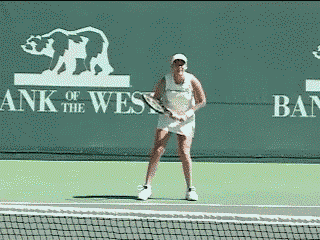
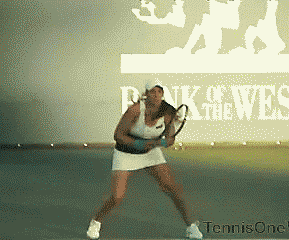
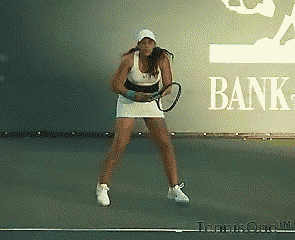
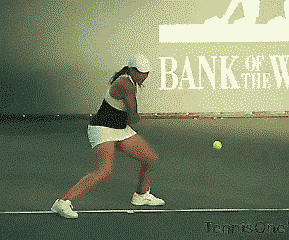
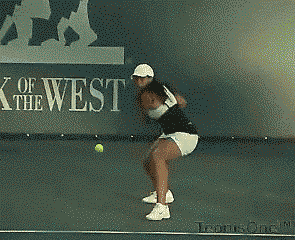
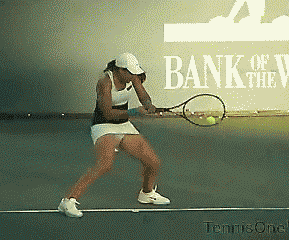
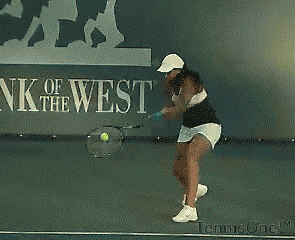
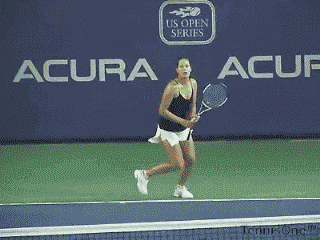

 Your comments are welcome. Let us know what you think about this article by
Your comments are welcome. Let us know what you think about this article by